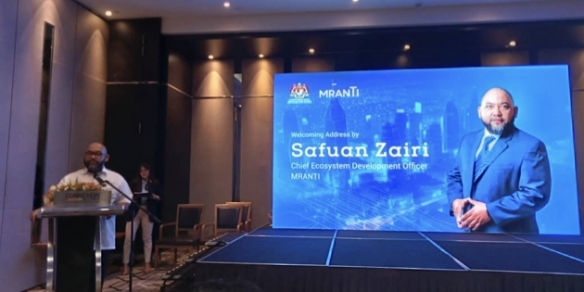Reinventing the office
By Praveen Kumar September 18, 2018
- The workplace of the future will involve more than just a remodelling of the physical environment
- Workspace transformation across Asia is being driven primarily by the region’s millennials

THE question of “where we work” cannot be divorced from “how we work” – and that is why the whole concept of “the office” is changing so radically.
From closed offices to shared work spaces, to personal mobile devices, change has been a constant in our workday environment with developments redefining how and where we work.
Redefining the culture of work
The workplace of the future will involve much more than just a remodelling of the physical environment. It is transforming all aspects including how we consume, transact and share data and manage workflows in the organisation, to create a digital workplace which is flexible, mobile and exists as much on our own terms, time and space as it does in the office.
The key to work in the future is technology, and how we utilise it to realise increased flexibility, responsiveness, mobility, collaboration, agility and ultimately productivity.
The IDG Workplace of the Future 2017 study found that four out of five employees surveyed see the move towards digitisation as a cultural rethink of when and where work is carried out.
Today’s office workers want more flexibility in their working hours, and more than half the companies surveyed are delivering against this goal by trying to create a more “out of office” work environment, one that more closely matches the daily lifestyle of today’s younger workforce.
What are the essential features of the transition strategy that forward-looking companies need to implement? According to the same study, 57% of the organisations consulted, agree that an approach based on mobility and technology will engage and connect employees, boosting loyalty and driving productivity.
Changing demographics driving change
To a great extent, it is changing workforce demographics and the rapid adoption of new technologies that are driving these fundamental changes in the workspace and how we work.
This workspace transformation across Asia is being driven primarily by the region’s millennials, who will make up more than 50% of the workforce by 2020. An IDC Infobrief reports that millennials’ instinctive appreciation for new technologies combined with enterprises' constant search for competitive advantage will lead to the adoption of solutions and approaches with high potential to accelerate innovation.
These are likely to include augmented and virtual reality (AR/VR), cognitive/artificial intelligence (AI), and robotics. Their inclusion in the workplace can lead to new working styles and practices particularly in the areas of human-device interfaces, cross cultural and organisational collaboration, talent development, visualisation, and data-driven insights.
The mobile-first approach
The mobile workspace, in particular, is rapidly redefining the future of workplace as Asia’s millennials demand a flexible, mobile approach to working. They expect an intuitive, easy-to-use, all-in one experience that is mobile, agile, and yet robust, that can be accessed and used anywhere, at any time.
What are the challenges to delivering this flexible, mobile experience?
Companies recognise that they must deconstruct and rebuild the work model, implementing the systems, solutions and security protocols that enable efficiency and realise the benefits of a connected and agile environment.
The flexible, mobile workplace of the future cannot be just a flight of fancy but one where, data must be shared, tracked, controlled in accordance to corporate governance, privacy, and compliance requirements.
Content and security-to-go
When work is no longer confined to the office, content and security must travel alongside the employee. To meet the needs of a remote workforce, and accommodate multi-person collaboration and review cycles, a single document must have the ability to be shared across a variety of locations, devices and business units seamlessly and swiftly.
This poses not only a security issue, including allowing unauthorised parties access to mission critical data but also increases vulnerabilities to a wider information eco-system where location-based regulations are violated.
It is the responsibility of the enterprise, not the employee, to ensure that security protocols are strictly adhered.
Enterprises must consider technologies that are able to mitigate this risk by enveloping sensitive documents in a policy wrapper that travels with the file, wherever it goes, ensuring the appropriate permissions and restrictions are in place at all times to help ensure compliance.
This flexible, mobile future workplace will appear seamless and intuitive to the data consumer or employee, but to deliver it businesses may be required to implement a complex infrastructure of software and web applications, while maintaining a farm of servers both on-premises and in the cloud.
Creating a single profile
The burden on IT teams to keep track of security and permissions for each employee across the network, grows exponentially as the organisation adds more manpower, which increases the risk of vulnerabilities making it easy for cracks in the security set-up.
To address the solution enterprises are creating a single profile that extends across platforms and servers, processes, that are streamlined, allowing IT professionals to manage rules and protocols from one location.
Businesses can now accommodate the new generation of employees that use two, three or more devices and as many as 50 different apps in the same workday, expecting a single sign or log-in, seamless navigation across devices. Luckily it is not necessary to rip out and replace legacy systems to achieve this brave new world. Businesses are now implementing this ideal, simply and cost-effectively, by implementing digital workspace technologies that deliver a single-pane-of-glass experience, allowing employees to access all necessary information from any device, at any time.
Streamlining the on-boarding process
It can be extremely costly and time-consuming to get employees up and running on corporate devices, creating permissions, securing devices and ensuring compliance across platforms for each employee.
With a single-pane-of-glass experience, however, the on-boarding process is streamlined. HR and IT teams can create a single profile for an employee that can be accessed across all devices, cutting down on both the time and cost of hiring a new employee and allowing for more flexible device policies.
Ultimately, the workplace environment of the future will be flexible and mobile. It will attract, engage and keep the brightest talent, while delivering efficiency and productivity and crucially maintain security and compliance.
Praveen Kumar is the general manager, Asia Pacific at ASG Technologies.
Related Stories:
Retaining millennials: It is about tech and culture, not money
Working to live, not living to work
Banks, the ‘millennials code’ has been cracked


